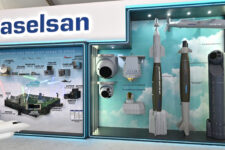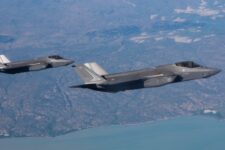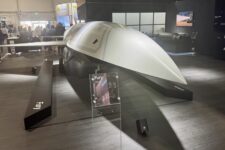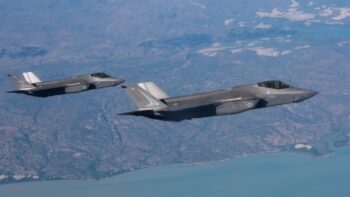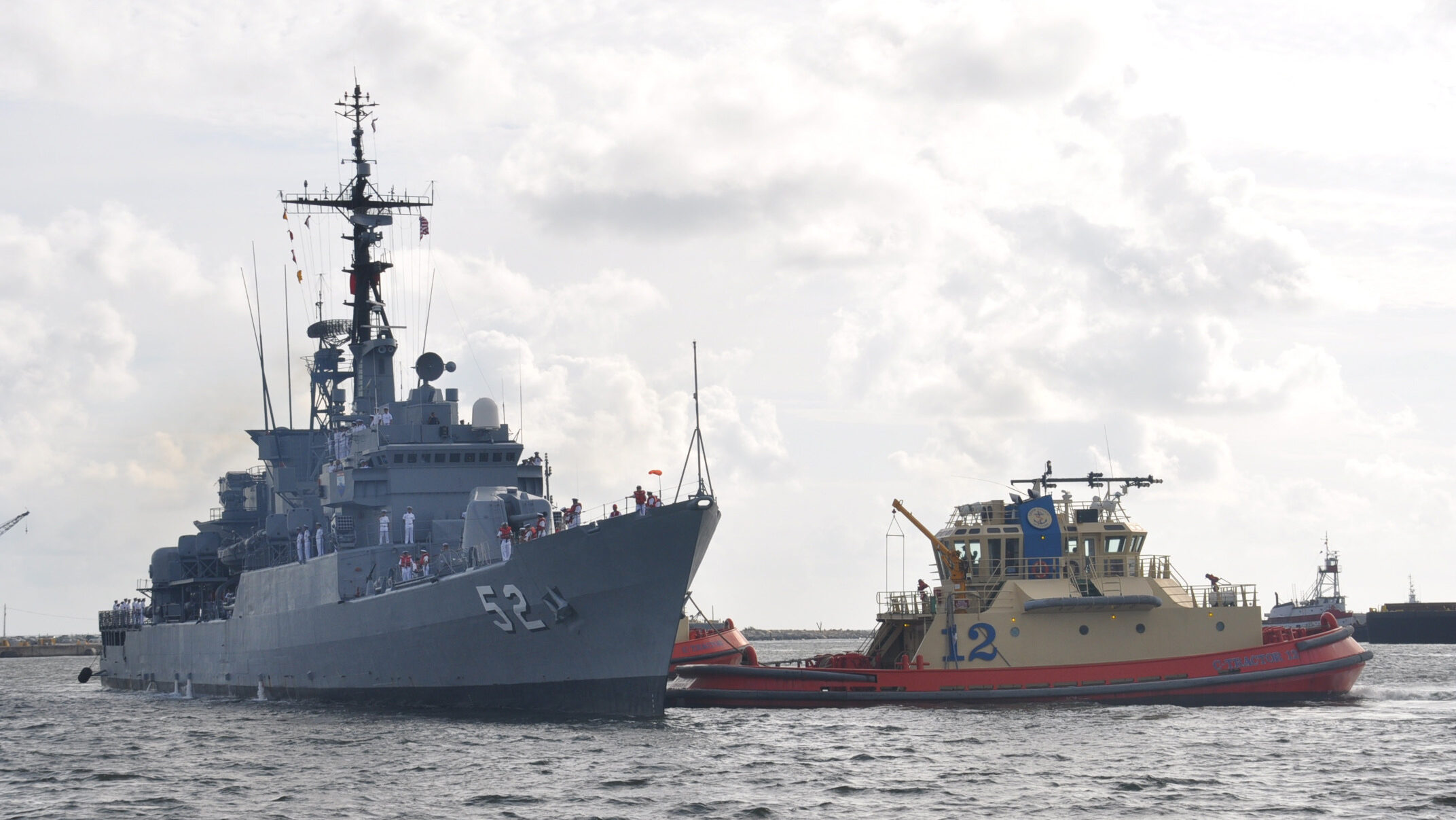
Peruvian navy frigate BAP Villavisencio (FM 52) is guided into port at Naval Station Mayport, Fla., during a three-month training deployment, June 15, 2012. (Official U.S. Navy photo by Lt. Cmdr. Corey Barker/Released)
WASHINGTON — In the span of weeks, South Korean defense firms recently nabbed back-to-back contracts in Peru, deepening a relationship developed over the past decade and, in the case of a ship construction deal, cementing Lima as Seoul’s “hub” in South America, according to analysts.
First, in late April, the Peruvian state-run shipyard Servicios Industriales de la Marina (SIMA) signed a contract with Korea’s Heavy Hyundai Industries (HHI) for the construction of one frigate, two landing craft units (described by SIMA as a multi-role vessel and an auxiliary transport vessel), and an offshore patrol vessel. The deal is worth around $460 million, and the vessels are expected to be delivered in 2029. The company described the contract as its “largest defense industry export ever to Central and South America.”
Then, earlier this month, Korea’s Hyundai Rotem announced it would sell 30 8×8 White Tiger armored vehicles for the Peruvian Army. The price tag for that deal is approximately $60 million.
Analysts said the shipbuilding deal, especially, signals Korea will have a presence and sway in Peru for long to come.
“South Korea now is in an advantageous position to support and influence the future of Peru’s shipbuilding, paving the way for SIMA to become Seoul’s hub for Central and South America,” said Andre Carvalho, a military sciences PhD researcher at the Brazilian Army Command and General Staff College. (Carvalho’s views do not represent those of the Brazilian Army.)
Hoshik Nam, a political science professor at Jacksonville State University, agreed. He said HHI is now a “strategic partner” for the Peruvian Navy.
RELATED: As UAE firms expand global reach, Brazil takes center stage for EDGE Group
If the SIMA project is successful, Nam, whose research focuses on arms transfers/exports and military aid, said HHI “could participate in more details related to the Peruvian Navy’s future production plans.”
The Peruvian Navy is looking to replace its fleet of six old Italian-made Lupo-class frigates — potentially more business for HHI should the first frigate deal go smoothly.
In the meantime, Mathew George, program director of arms transfers at the Stockholm International Peace Research Institute (SIPRI), said the current deal offers advantages to both sides: SIMA gains “expertise in shipbuilding,” and HHI will have another production facility in Peru for Korean ships, potentially lowering future acquisition costs and allowing Seoul more direct access to the Latin American market.
Breaking In An Ocean Away, Donations In Hand
The new HHI contract is not the first time SIMA has teamed up with a Korean company for shipbuilding projects.
The Peruvian Navy’s two landing platform docks — BAP Pisco, currently operational, and BAP Paita, under construction, as Breaking Defense has previously reported — are based on Daesun Shipbuilding & Engineering’s Makassar-class vessels. Similarly, SIMA has built a fleet of Río Pativilca-class patrol vessels based on designs by STX; the seventh and eighth platforms are currently under construction.
Moreover, over the past decade, South Korea has donated two Pohang-class corvettes, BAP Guise and BAP Ferré, to Peru.
It’s possible those donated ships affected Lima’s decision on the frigate. Siemon Wezeman, also of SIPRI, said that as South Korea’s navy and coast guard decommissions vessels, Seoul “has chosen to donate some of them, generally to states where Korea is marketing newly produced ships or other weapons.” Wezeman noted that this strategy has been successful in Egypt and the Philippines.
Such an approach is not unique to South Korea, Wezeman said, as “many exporting states do use similar donations to further their chances of sales.”
Carvalho said that South Korea “realized very early that South American militaries are pursuing the modernization of their equipment,” hence “exploring this market became one of their priorities.”
It’s also likely Seoul sees Peru as an entry into other South American markets, where it would like to see more of a presence, for its own geopolitical ends, according to Carvalho.
The Pacific Alliance countries — Chile, Colombia, Peru, and Mexico — and Ecuador “hold a somewhat special position within [South Korea’s] Indo-Pacific strategy,” he said, as Seoul aims to “contain” the “strategic influence” of China’s Belt and Road Initiative on the continent.
Outside Peru, Colombia has two Korean-made corvettes: the Donghae-class ARC Nariño, donated in 2014, and the Pohang-class ARC Tono, donated in 2020. Around a decade ago, Korea’s STX shipyard built two patrol vessels for the Colombian Navy, ARC Punta Ardita and ARC Punta Soldado, which are still operational.
Moreover, around 2012, Seoul sold SSM-700K C-Star surface-to-surface anti-ship missiles to Bogota. The Colombian Navy fired them in 2019 and 2023 for target practice to sink decommissioned vessels.
In late April, the Ecuadorean Ministry of Defense signed an agreement with the Korean Coast Guard to transfer a 4,400-ton patrol vessel. This agreement marked the third patrol vessel transferred to the Ecuadorian Coast Guard from Seoul within the five years. In 2020, Seoul donated two Haeuri-class/Type-A patrol vessels, Isla Floreana and Isla Darwin.
Meanwhile, the Chilean Navy operates a fleet of different KIA vehicles, including the KIA KM 420 light tactical vehicle.
Finally, the Uruguayan Army operates howitzers acquired from Korea in the early 1980s. There’s also one donation on the horizon as South Korea and Uruguay negotiate the transfer of a Chamsuri-class Patrol Killer Medium (PKM) patrol boat. As recently as late 2023, Uruguayan naval authorities say the negotiations are ongoing.
But still, the HHI-SIMA shipbuilding project in Peru is something of a test case. Should it go well, analysts said other regional countries, such as Ecuador, could also consider South Korea as a future partner for defense acquisition programs, as their own surface fleets need upgrades.
Seoul, more than 16,000 miles away from Lima over open ocean, appears ready to sail into the breach.



